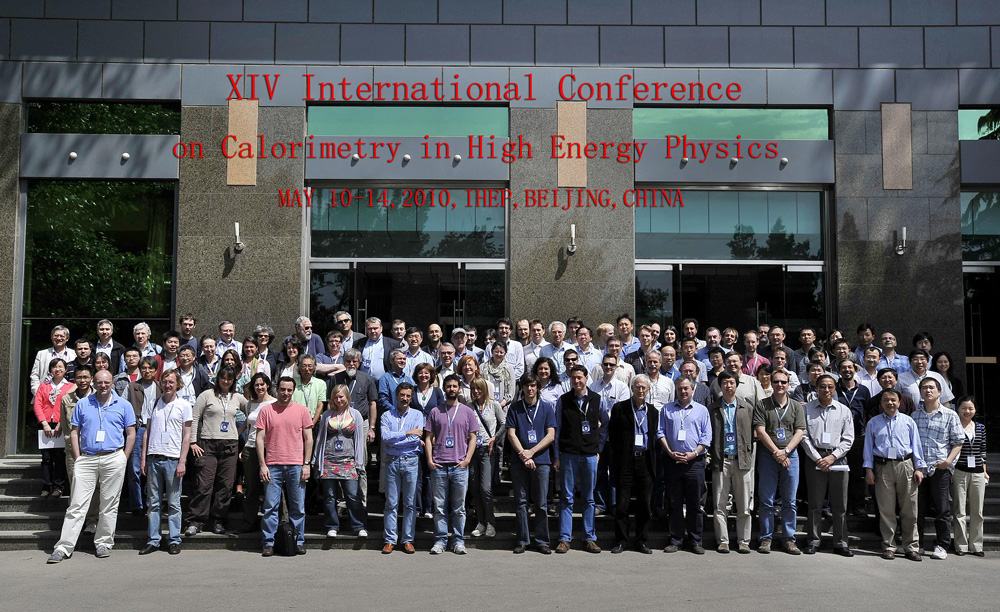Calorimeter Olympics in Beijing
The International Conferences on Calorimetry in High Energy Physics (also known as the Calor Conference series, started in October 1990 at Fermilab) address all aspects of calorimetric particle
 |
|
Group photo of the Calor conference participants. Image: IHEP/Jie Liu |
“This conference brings together all interested parties in high-energy physics and related fields for in-depth discussions of the latest developments and innovations of calorimetry,” said Yifang Wang, Chair of Calor2010 and Deputy Director of IHEP. “With the LHC, the ILC and other new experiments in particle physics, neutrino physics and astroparticle physics, this year's conference promises to be particularly lively.” Nearly 100 scientific researchers from 15 countries and regions participated in the conference, and around 100 talks were given on the conference.
Felix Sefkow, spokesman of the CALICE (Calorimeter for the Linear Collider Experiment) collaboration had three personal highlights at this conference. One is the report on the commissioning, calibration and performance of the calorimeters of the LHC experiments in proton-proton collision runs. “I was very impressed by the perfection in operation and by the speed with which first physics results based on calorimetry could be extracted from data taken only few weeks ago. This is possible only with excellent teamwork; congratulations to the colleagues at the LHC!” said Sefkow.
Another focus of the conference was progress reports towards developing crystals for hadron calorimeters. “This is a relatively new trend; crystals are so far being used in the world's most precise electromagnetic calorimeters. For the measurement of jets, advances in active materials as well as in photosensors are necessary. With sufficiently fine segmentation, this so-called total absorption approach can be combined with particle flow methods which enhance its potential further,” said Sefkow.
Besides, researchers of CALICE collaboration gave presentations on R&D for linear collider calorimeters and on test beam results, which were met with great interest and initiated further discussions. “One of the highlights here was the validation of particle flow algorithm performance with experimental data from the test beam prototypes. The preliminary results constitute a milestone in the development of detectors for a future linear collider,” said Sefkow.
Sefkow also recognised there were still some critical technical problems for scientists to solve. Take the particle flow approach for example: “it requires very fine segmentation, which means a very large density of independent read-out channels which present enormous challenges to the electronic and mechanical integration,” said Sefkow.
Since the Calor conference was held in China for the first time, Chinese scientists showed their involvement in detector development. There were ten talks given by Chinese high-energy physicists related to the latest progress of BESIII (Beijing Spectrometer III) experiment, ALICE (one of the four main LHC experiments) readout techniques, and astrophysics and neutrino calorimetry.
-- Min Zhang
Source: ILC website